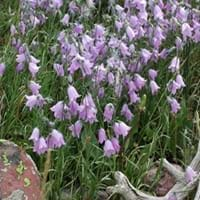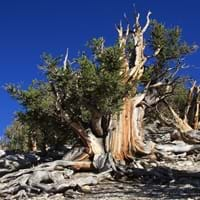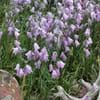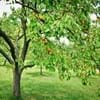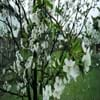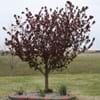Life Span
Perennial
Perennial
Type
Tree
Needled or Scaled Evergreen
Origin
Caribbean
Western United States
Types
Campanula persicifolia, Campanula glomerata, Campanula carpatica
Not Available
Number of Varieties
Not Available
Habitat
Terrestrial
Rocky areas, Slopes
USDA Hardiness Zone
10-13
2-9
AHS Heat Zone
12-8
Not Available
Sunset Zone
H1, H2, 13, 20, 21, 22, 23, 24
A2, A3, 1a, 1b, 2a, 2b, 3a, 3b, 4, 5, 6, 7, 8, 9, 10, 11, 14, 15, 16, 17, 18, 19
Habit
Oval or Rounded
Pyramidal
Flower Color
White, Light Pink
Not Available
Flower Color Modifier
Bicolor
Bicolor
Fruit Color
Black
Chocolate
Leaf Color in Spring
Green, Dark Green
Green
Leaf Color in Summer
Green, Dark Green
Green
Leaf Color in Fall
Green, Dark Green
Green
Leaf Color in Winter
Green, Dark Green
Green
Leaf Shape
Irregular
Needle like
Plant Season
Spring, Summer, Fall
Spring, Summer, Fall, Winter
Sunlight
Full Sun, Partial Sun, Partial shade
Full Sun
Growth Rate
Slow
Very Slow
Type of Soil
Loam, Sand
Loam, Sand
The pH of Soil
Neutral, Alkaline
Neutral
Soil Drainage
Well drained
Well drained
Bloom Time
Indeterminate
Not Available
Where to Plant?
Ground
Ground
How to Plant?
Divison, Seedlings
Seedlings
Plant Maintenance
Medium
Medium
Watering Requirements
Average Water Needs, Keep ground moist, Requires consistently moist soil
Average Water Needs
In Summer
Lots of watering
Lots of watering
In Spring
Moderate
Moderate
In Winter
Average Water
Average Water
Soil pH
Neutral, Alkaline
Acidic, Neutral, Alkaline
Soil Type
Loam, Sand
Clay, Loam, Sand
Soil Drainage Capacity
Well drained
Well drained
Sun Exposure
Full Sun, Partial Sun, Partial shade
Full Sun, Partial Sun
Pruning
Cut limbs, Remove branches, Remove damaged leaves, Remove dead branches, Remove dead leaves, Remove dead or diseased plant parts
Cut limbs, Pinch Tips, Remove branches, Remove damaged leaves, Remove dead branches, Remove dead leaves, Remove dead or diseased plant parts
Fertilizers
Apply N-P-K
All-Purpose Liquid Fertilizer
Pests and Diseases
Red blotch
Red blotch
Plant Tolerance
Salt
Drought
Flower Petal Number
Single
Not Available
Showy Bark
Not Available
No
Foliage Texture
Coarse
Fine
Foliage Sheen
Glossy
Matte
Attracts
Hummingbirds
Birds
Allergy
Not Available
Congestion, Dermatitis, Itchiness, Itchy eyes, Runny nose, Whooping Cough
Aesthetic Uses
Showy Purposes
Bonsai, Borders
Beauty Benefits
Not Available
Not Available
Edible Uses
Insignificant
Yes
Environmental Uses
Air purification
Air purification, Wildlife
Medicinal Uses
Not Available
Antiseptic, Bladder Infection, Boils, Burns, Cold, Cough, Diuretic, Kidney problems, Poultice, Respiratory Disorders, Rheumatism, Skin Disorders, tuberculosis, Vermifuge, Wounds
Part of Plant Used
Flowers
Leaves
Other Uses
Used as Ornamental plant
Used as Christmas Tree, Used in herbal medicines
Used As Indoor Plant
Insignificant
No
Used As Outdoor Plant
Yes
Yes
Garden Design
Feature Plant, Foundation, Mixed Border, Shade Trees, Tropical
Feature Plant, Foundation, Mixed Border, Rock Garden / Wall, Topiary / Bonsai / Espalier
Botanical Name
PORTLANDIA grandiflora
PINUS aristata 'Sherwood Compact'
Common Name
Bellflower, Jamaican Tree-lily
Bristlecone Pine
In Hindi
Bellflower plant
ब्रिस्टलकोन पाइन
पेड़
In German
Glockenblumen - Pflanze
Bristlecone Pine
Baum
In French
plante Bellflower
Bristlecone Pine
Arbre
In Spanish
planta de Bellflower
Pino de cerdas cónicas
Árbol
In Greek
φυτό καμπανούλα
Bristlecone Pine
Δέντρο
In Portuguese
planta Bellflower
Bristlecone Pine
Árvore
In Polish
dzwonek roślin
Sosna oścista
Drzewo
In Latin
bellflower herba
Pinus Bristlecone
ligno
Phylum
Magnoliophyta
Coniferophyta
Class
Magnoliopsida
Pinopsida
Order
Gentianales
Pinales
Family
Rubiaceae
Pinaceae
Clade
Angiosperms, Asterids, Eudicots
Not Available
Tribe
Chiococceae
Not Available
Subfamily
Cinchonoideae
Not Available
Number of Species
Not Available
Not Available
Season and Care of Bellflower and Bristlecone Pine
Season and care of Bellflower and Bristlecone Pine is important to know. While considering everything about Bellflower and Bristlecone Pine Care, growing season is an essential factor. Bellflower season is Spring, Summer and Fall and Bristlecone Pine season is Spring, Summer and Fall. The type of soil for Bellflower is Loam, Sand and for Bristlecone Pine is Loam, Sand while the PH of soil for Bellflower is Neutral, Alkaline and for Bristlecone Pine is Neutral.
Bellflower and Bristlecone Pine Physical Information
Bellflower and Bristlecone Pine physical information is very important for comparison. Bellflower height is 91.44 cm and width 91.44 cm whereas Bristlecone Pine height is 365.76 cm and width 182.88 cm. The color specification of Bellflower and Bristlecone Pine are as follows:
Bellflower flower color: White and Light Pink
Bellflower leaf color: Green and Dark Green
Bristlecone Pine flower color: Not Available
- Bristlecone Pine leaf color: Green
Care of Bellflower and Bristlecone Pine
Care of Bellflower and Bristlecone Pine include pruning, fertilizers, watering etc. Bellflower pruning is done Cut limbs, Remove branches, Remove damaged leaves, Remove dead branches, Remove dead leaves and Remove dead or diseased plant parts and Bristlecone Pine pruning is done Cut limbs, Pinch Tips, Remove branches, Remove damaged leaves, Remove dead branches, Remove dead leaves and Remove dead or diseased plant parts. In summer Bellflower needs Lots of watering and in winter, it needs Average Water. Whereas, in summer Bristlecone Pine needs Lots of watering and in winter, it needs Average Water.
